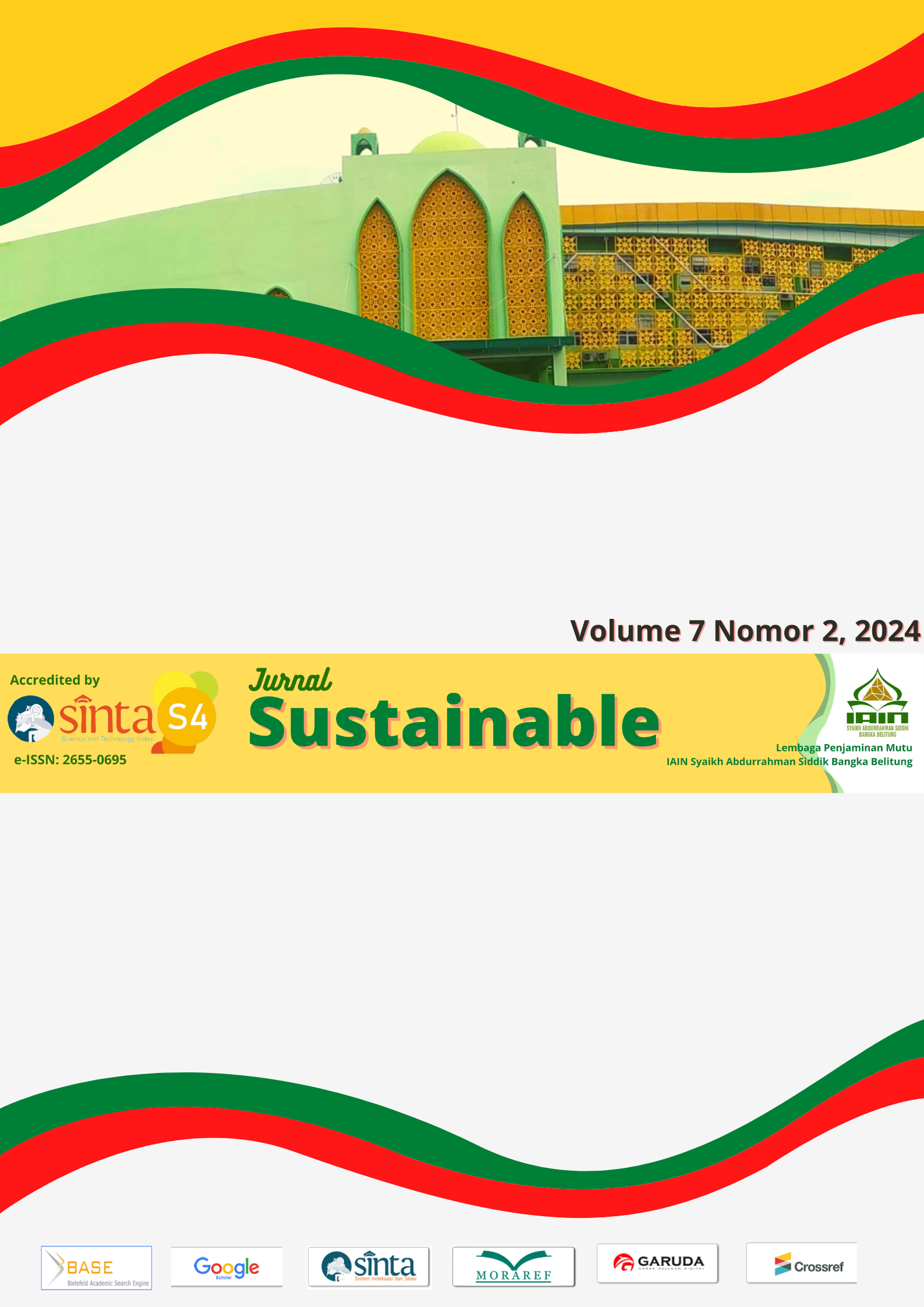Interactive Digital Flipbooks: Enhancing Engagement and Accessibility in Education for Diverse Learners in Technology in ELT Course at Universitas Negeri Medan
Abstract
Digital tools have become increasingly popular in enhancing student engagement and accessibility, particularly in the context of English Language Teaching (ELT). This study explores the effectiveness of Heyzine digital flipbooks in improving engagement and accessibility for diverse learners in the Technology in ELT course at Universitas Negeri Medan. Using a descriptive qualitative approach, data were collected through classroom observations, lecturer interviews, focus group discussions (FGDs), surveys, and questionnaires. The findings show that digital flipbooks significantly enhance student engagement, with multimedia elements like videos, animations, and quizzes catering to different learning styles. Accessibility features, such difficulties accessing content in digital flipbooks and accessibility in mind for students with different needs, were particularly beneficial for students with learning disabilities. However, technical challenges such as slow loading times and navigation difficulties were noted, alongside concerns regarding accessibility design for students with visual, auditory, and learning disabilities. Despite these issues, 75% of students reported never feeling disengaged, and 95% of students found the interactive features most engaging. The study concludes that while digital flipbooks have great potential to foster engagement and improve learning outcomes, ongoing improvements in usability and accessibility are necessary to fully support diverse learners.
Downloads
References
Bledsoe, C., & Pilgrim, J. (2016). Creating “Spaces” for Professional Development: Education Organizations’ Use of Facebook. The Journal of Social Media in Society, 5(1).
Chen, C.-C., Chiu, P.-S., & Huang, Y.-M. (2015). The Learning Style-Based Adaptive Learning System Architecture. International Journal of Online Pedagogy and Course Design, 5(2), 1–10. https://doi.org/10.4018/IJOPCD.2015040101
Davidson, Christina. (2009). Young childrens engagement with digital texts and literacies in the home : Pressing matters for the teaching of English in the early years of schooling. English Teaching, 8(3), 36–54.
Donlon, E., Costello, E., & Brown, M. (2020). Collaboration, collation, and competition: Crowdsourcing a directory of educational technology tools for teaching and learning. Australasian Journal of Educational Technology, 41–55. https://doi.org/10.14742/ajet.5712
Dooly, M., & Sadler, R. (2020). “If you don’t improve, what’s the point?” Investigating the impact of a “flipped” online exchange in teacher education. ReCALL, 32(1), 4–24. https://doi.org/10.1017/S0958344019000107
Arisandhi, G. A. M. M., Wibawa, I. M. C., & Kadek Yudiana. (2023). Flipbook: Media Pembelajaran Interaktif Untuk Meningkatkan Kognitif IPA Siswa Sekolah Dasar. MIMBAR PGSD Undiksha, 11(1), 165–174. https://doi.org/10.23887/jjpgsd.v11i1.55034
Jerardi, K., Solan, L., DeBlasio, D., O’Toole, J., White, C., Yau, C., Sucharew, H., & Klein, M. D. (2013). Evaluating the impact of interactive and entertaining educational conferences. Perspectives on Medical Education, 2(5–6), 349–355. https://doi.org/10.1007/S40037-013-0074-Z
Kharisma, M. M., Wardhono, W. S., & Suharsono, A. (2024). Development of a Boolean Logic Game for Visual, Auditory and Kinesthetic Learning Styles. MATICS: Jurnal Ilmu Komputer Dan Teknologi Informasi (Journal of Computer Science and Information Technology), 16(1), 24–29. https://doi.org/10.18860/mat.v16i1.25578
López-Belmonte, J., Pozo-Sánchez, S., Carmona-Serrano, N., & Moreno-Guerrero, A.-J. (2022). Flipped Learning and E-Learning as Training Models Focused on the Metaverse. Emerging Science Journal, 6, 188–198. https://doi.org/10.28991/ESJ-2022-SIED-013
Lugo, G. M. A. S., Armando, L. R., Jesús, T. Q., & Ramona, I. G. L. (2019). Identificación de estilos de aprendizaje en plataformas tecnológica (LMS) mediante árboles de decisión. Revista de Estilos de Aprendizaje, 12(23), 123–153. https://doi.org/10.55777/rea.v12i23.1213
Mohd, F., Wan Yahya, W. F. F. A., Ismail, S., Jalil, M. A., & Noor, N. M. M. (2019). An Architecture of Decision Support System for Visual-Auditory-Kinesthetic (VAK) Learning Styles Detection Through Behavioral Modelling. International Journal of Innovation in Enterprise System, 3(02), 24–30. https://doi.org/10.25124/ijies.v3i02.37
Rizky, S., & Widihastrini, F. (2018). The Development of Interactive Flipbook-Formed Teaching Material to Improve the of Grade 4 Studentsâ€TM Social Science Learning Outcomes. Elementary School Teacher (EST) Journal, 2(2).
Santia, E., & Nurmayani, N. (2023). Bahan Ajar Flipbook Interaktif Berbasis Problem Based Learning Untuk Meningkatkan Pemahaman Materi Siswa Sekolah Dasar. Paedagogi: Jurnal Kajian Ilmu Pendidikan (e-Journal), 9(1), 116. https://doi.org/10.24114/paedagogi.v9i1.46101
Satria, A., Ramadhani, F., & Salamah, S. (2023a). Pengembangan Bahan Ajar Digital Flipbook Dalam Meningkatkan Kompetensi Guru TK di TK Citra Indonesia. Jurnal Pengabdian Pada Masyarakat Indonesia, 2(5), 58–65. https://doi.org/10.55542/jppmi.v2i5.880
Takeda, K., Earl, G., Frey, J., Keay, S., & Wade, A. (2013). Enhancing research publications using Rich Interactive Narratives. Philosophical Transactions of the Royal Society A: Mathematical, Physical and Engineering Sciences, 371(1983), 20120090. https://doi.org/10.1098/rsta.2012.0090
Tomkins, J., & Wallis, D. (2023). P002 Implementation of a new digital exercise tool in axial spondyloarthritis and a musculoskeletal therapy outpatient department: a service evaluation. Rheumatology, 62(Supplement_2). https://doi.org/10.1093/rheumatology/kead104.044
Wen, C.-N., Huang, C.-G., Chang, P.-Y., Yang, T.-H., You, H.-L., Ning, H.-C., & Tsao, K.-C. (2022). Application of the electronic book to promote self-directed learning in medical technologist continuing education: a cross-sectional study. BMC Medical Education, 22(1), 713. https://doi.org/10.1186/s12909-022-03724-w
Wibowo, M., Gustina, E., Ayu, S. M., & Sofiana, L. (2019). Digital Flipbook Media as a Media for Health Promotion in Youth: Research and Development. International Journal of Educational Research Review, 4, 725–733. https://doi.org/10.24331/ijere.628717
Youhasan, P., Henning, M. A., Chen, Y., & Lyndon, M. P. (2022). Developing and evaluating an educational web-based tool for health professions education: the Flipped Classroom Navigator. BMC Medical Education, 22(1), 594. https://doi.org/10.1186/s12909-022-03647-6
Zhu, T., & Yang, Y. (2023). Research on mobile learning platform interface design based on college students’ visual attention characteristics. PLOS ONE, 18(7), e0283778. https://doi.org/10.1371/journal.pone.0283778
Copyright (c) 2024 Indra Hartoyo, Nora Ronita Dewi, Bahagia Saragih, Eko Isdianto, Yuni Khairina

This work is licensed under a Creative Commons Attribution 4.0 International License.






.png)
